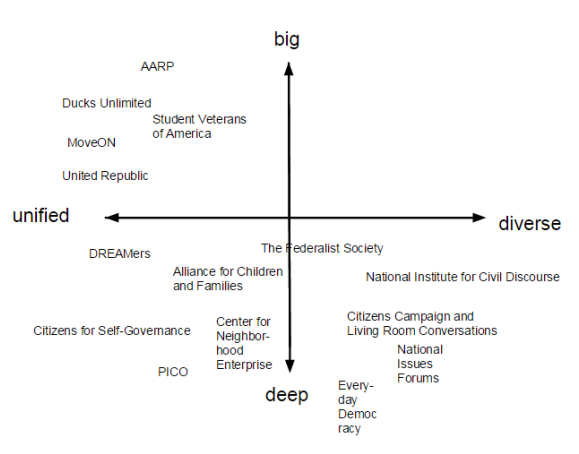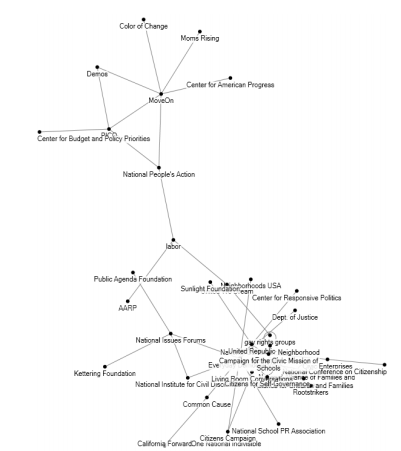This four-page case study (2014) from The Intersector Project outlines how the City of Seattle used cross-sector collaboration to establish the Green Seattle Partnership to help reforest the city parks in Seattle, Washington.
From the Intersector Project
In 1994 the City of Seattle and the Parks Department began to notice something wrong with trees in city parks. Research found that Seattle’s 2,500 acres of forested city parks were at risk from invasive plants such as English Ivy, Himalayan blackberry and bindweed. In 2004, experts projected that within 20 years about 70 percent of Seattle’s forested parkland trees would be dead. Previously, park-goers removed invasive species on their own, while non-profit and government organizations likewise worked independently. Rather than helping the problem, however, these piecemeal efforts placed an undue strain on the city’s existing resources. In order to save the parks, a shared effort between community members, experts in forestry, and the departments that held park resources was necessary. In 2004, the Green Seattle Partnership was formed, with the aim of arming citizens to help the city’s trees in partnership with the Department of Parks, Public Utilities and the Office of Sustainability and Environment. Under the leadership of Mark Mead, Senior Urban Forester, the Partnership created a 20-year strategic plan to sustain Seattle’s forested parks. Green Seattle Partnership is now the largest urban forest restoration project in the country. Mark’s use of agents across all sectors connected to the issue, and mobilizing community members to volunteer 500,000 hours by 2013 to the reforestation program, have put the Green Seattle Partnership in place to achieve their goal of planting 500,000 new trees by 2025.
“What really energized me and brought me into the fold of doing this work was in the very early days…working with the community members, seeing their enthusiasm, their drive, and their commitment to making their community a better place.”– Mark Mead, Senior Urban Forester
This case study, authored by The Intersector Project, tells the story of this initiative.
More about The Intersector Project
The Intersector Project is a New York-based 501(c)(3) non-profit organization that seeks to empower practitioners in the government, business, and non-profit sectors to collaborate to solve problems that cannot be solved by one sector alone. We provide free, publicly available resources for practitioners from every sector to implement collaborative solutions to complex problems. We take forward several years of research in collaborative governance done at the Center for Business and Government at Harvard’s Kennedy School and expand on that research to create practical, accessible resources for practitioners.
Follow on Twitter @theintersector.
Resource Link: http://intersector.com/case/greenseattle_washington/ (Download the case study here.)
This resource was submitted by Neil Britto, the Executive Director at The Intersector Project via the Add-a-Resource form.





 h a grant from the National Science Foundation. The software focuses dialogues on a specific idea, encourages users to think about both sides of the idea, listen to and include the thoughts of others and express a nuanced opinion. Consider.it shows what thousands of people think about an idea on a histogram and why they think this way with a ranked list of all points from most persuasive to least persuasive. These results show the common ground, sticking points and misconceptions that a facilitator can address to build consensus. For the past five years, Consider.it has powered the award winning
h a grant from the National Science Foundation. The software focuses dialogues on a specific idea, encourages users to think about both sides of the idea, listen to and include the thoughts of others and express a nuanced opinion. Consider.it shows what thousands of people think about an idea on a histogram and why they think this way with a ranked list of all points from most persuasive to least persuasive. These results show the common ground, sticking points and misconceptions that a facilitator can address to build consensus. For the past five years, Consider.it has powered the award winning 
